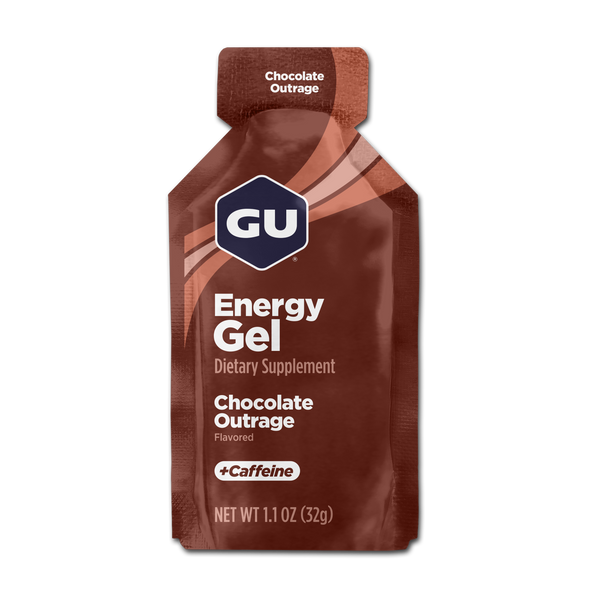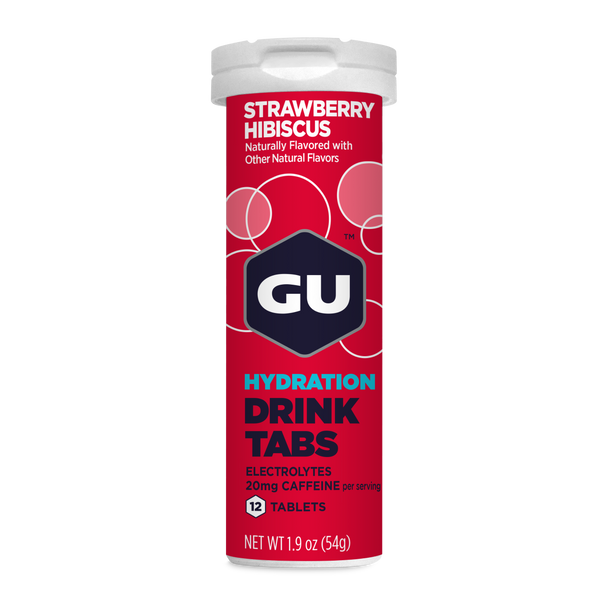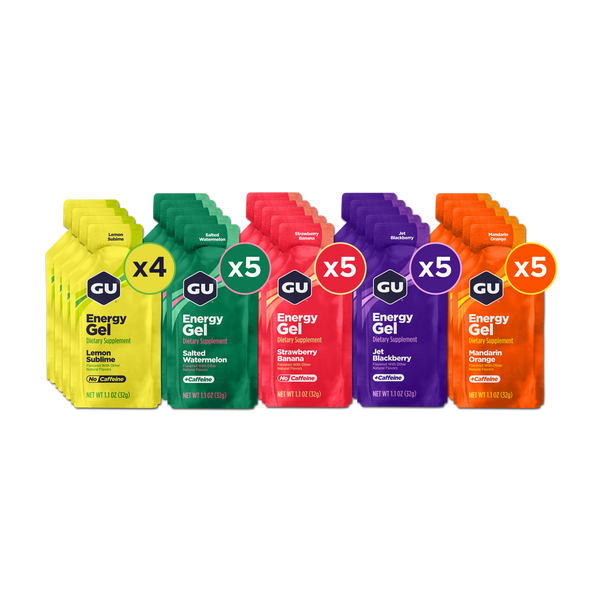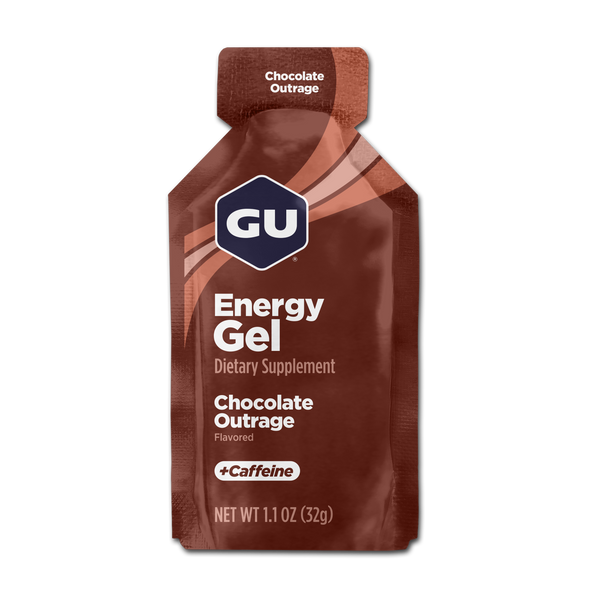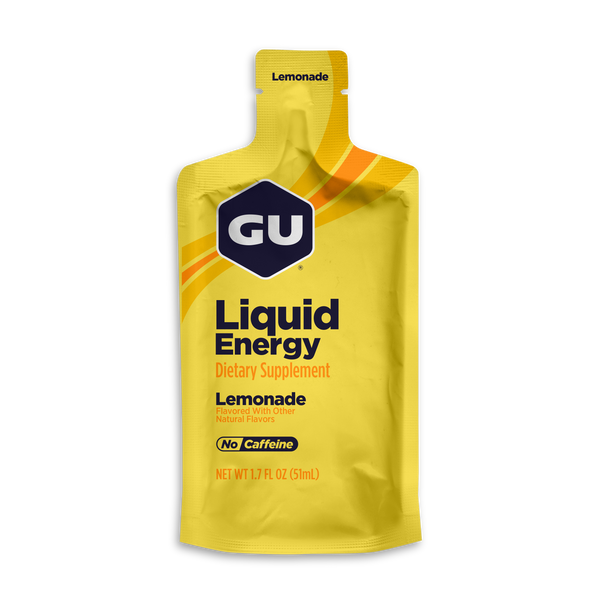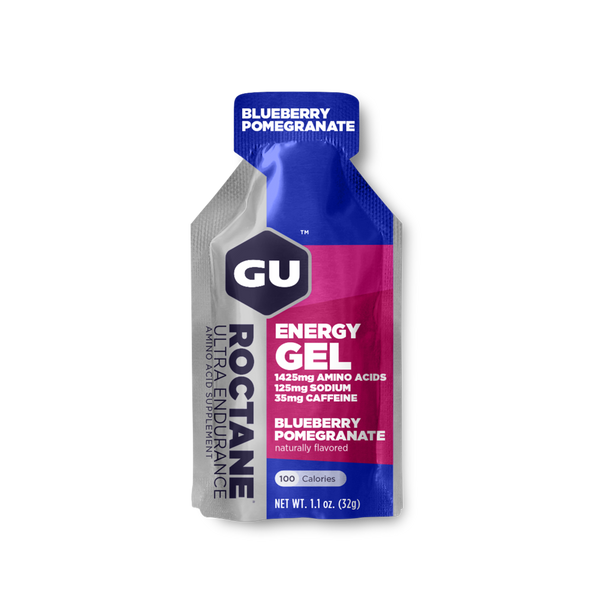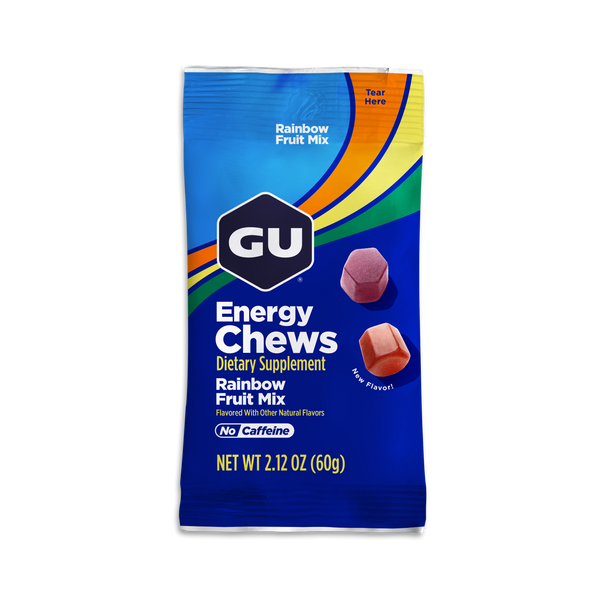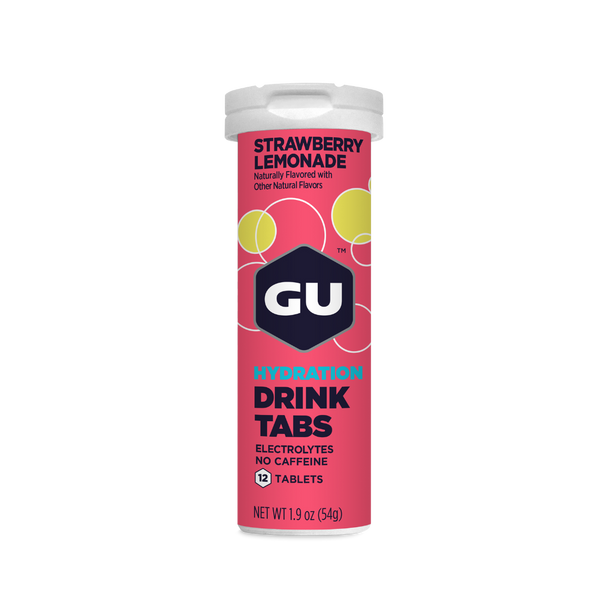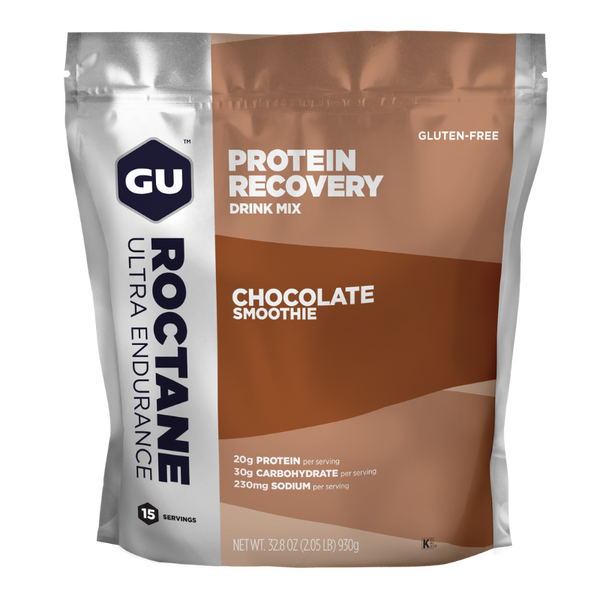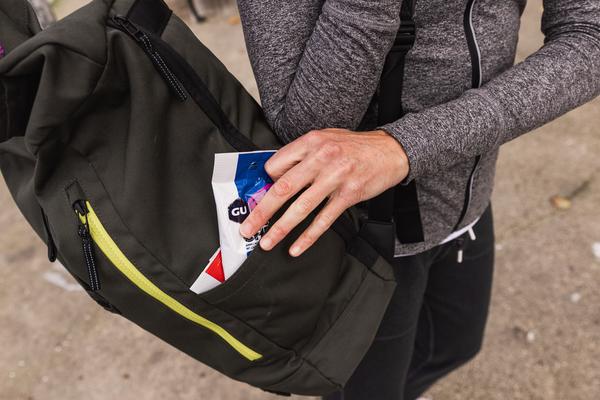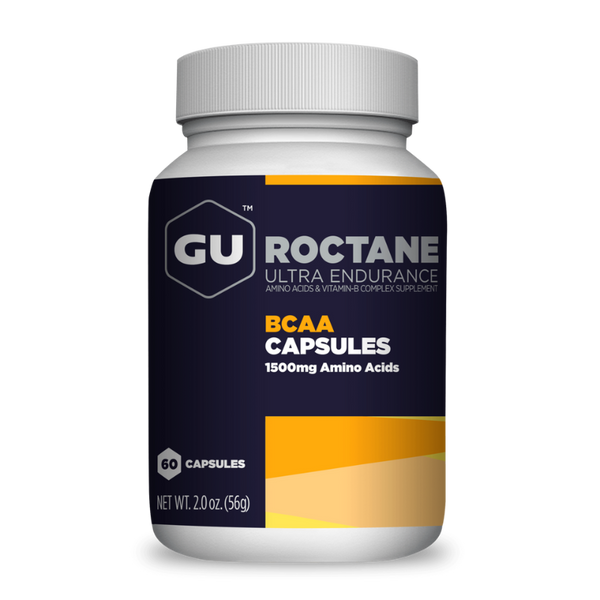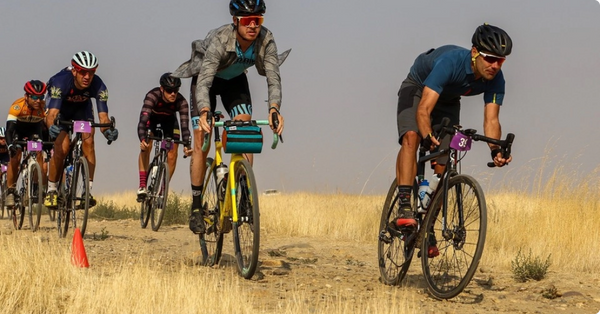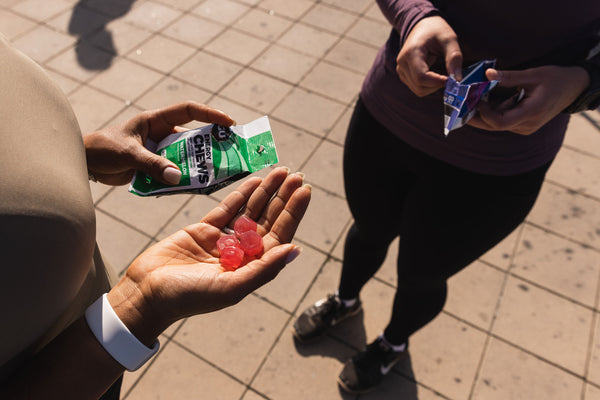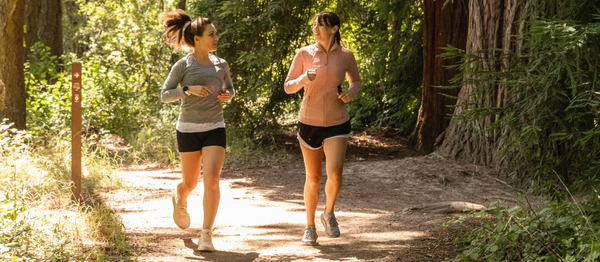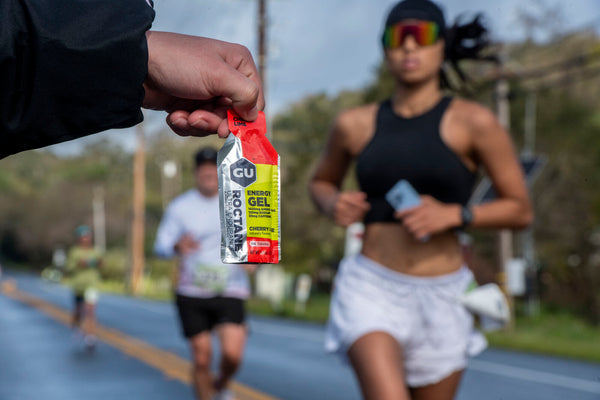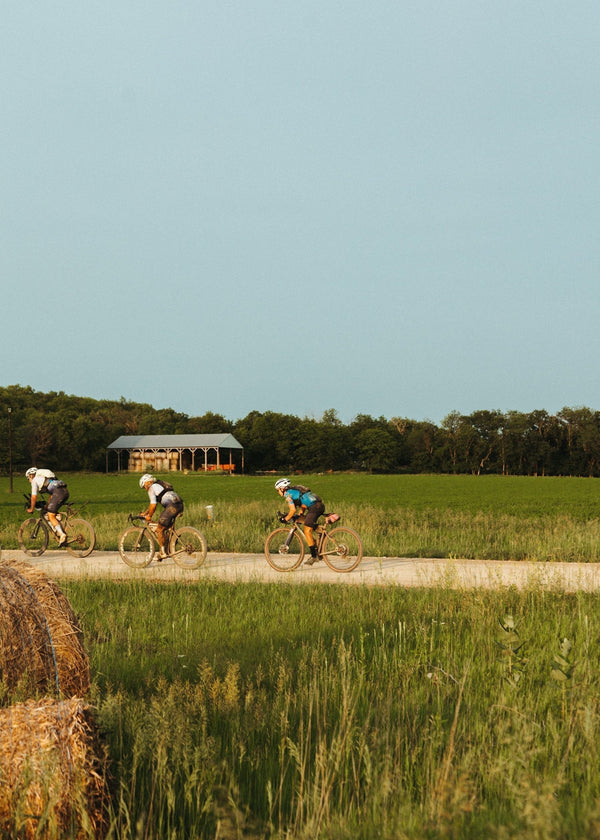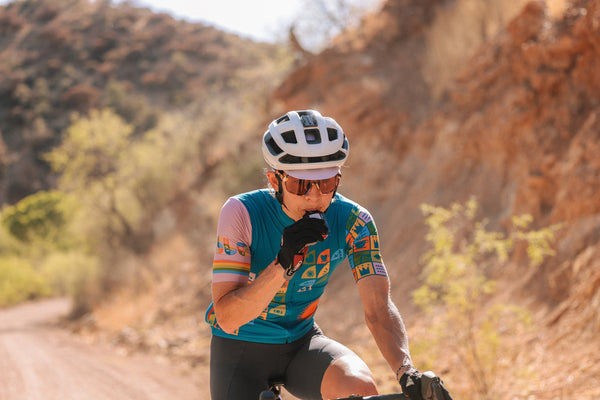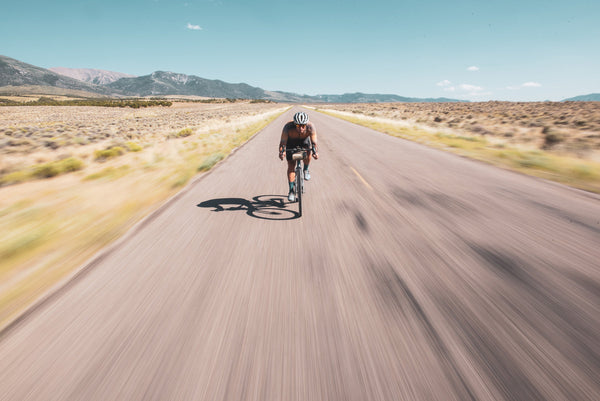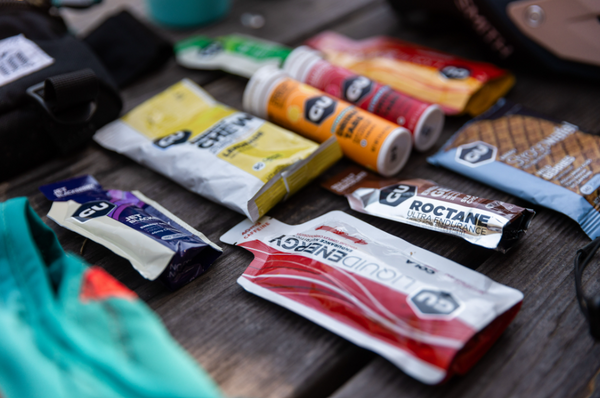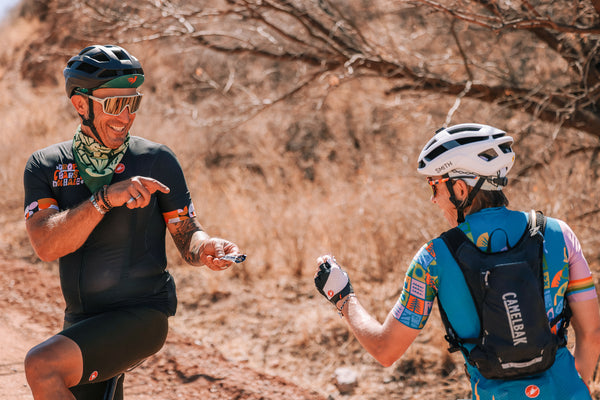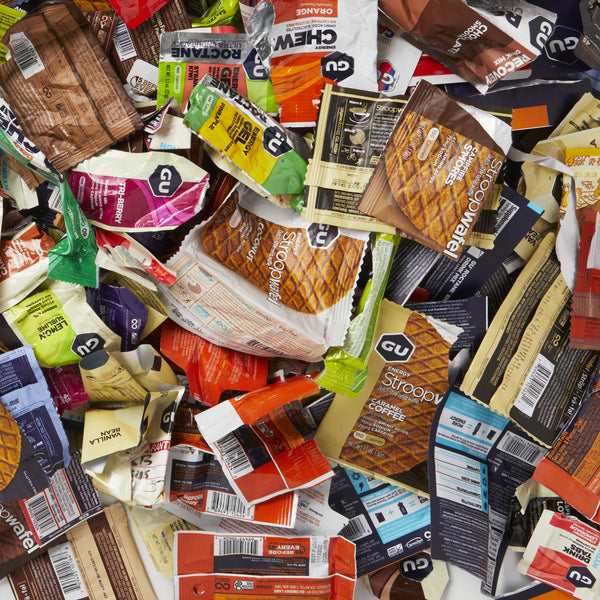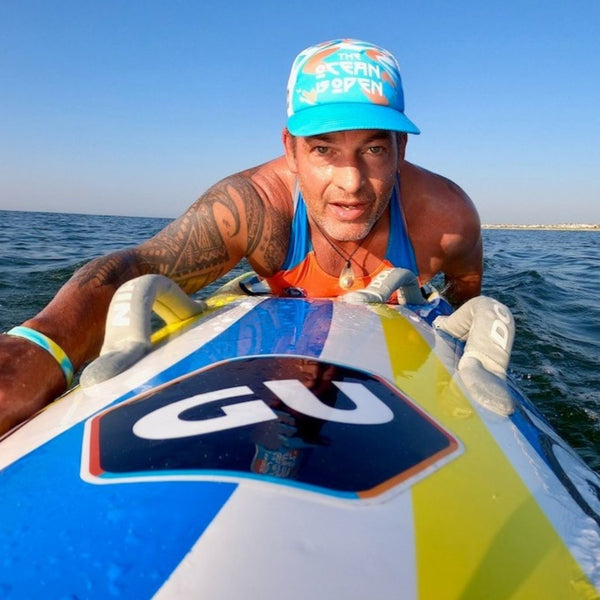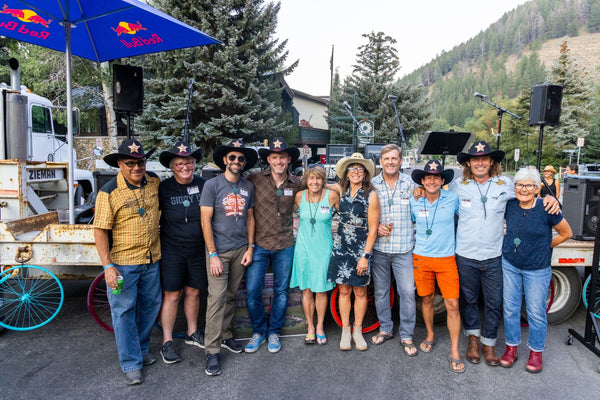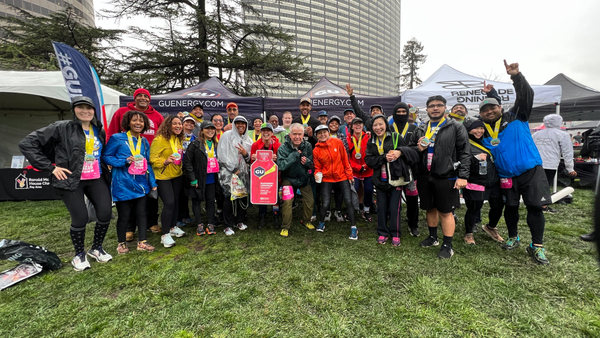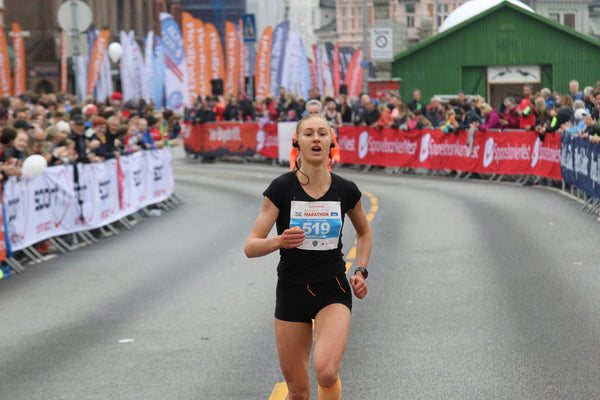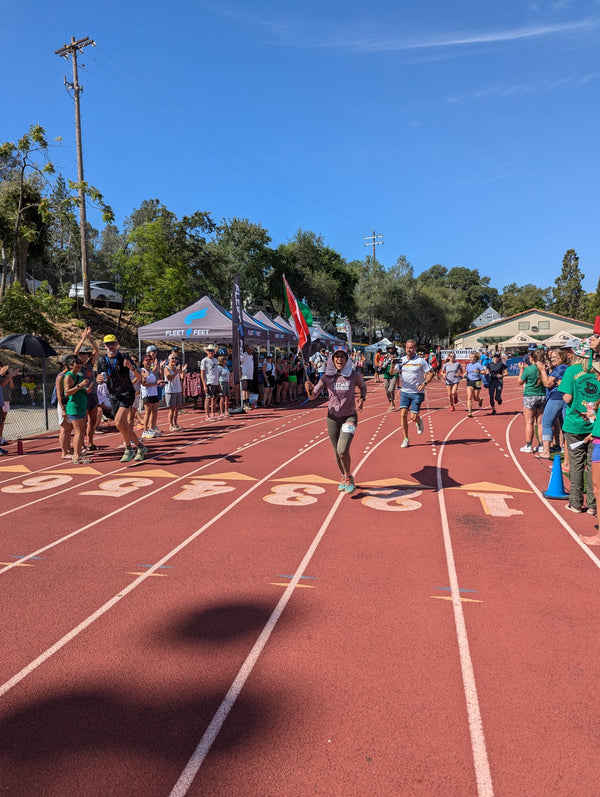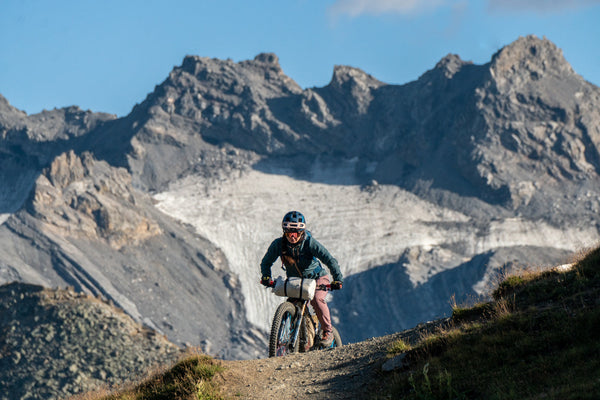Authored by Roxanne Vogel, PhD
The Javelina Jundred is a 100-mile ultra-marathon set on a five-loop course through the rolling terrain of the Arizona desert. Runners tackle one initial 22.3-mile loop, followed by four identical 19.45-mile loops, totaling 100.1 miles and 6,300 feet of elevation gain. Famous for its lively Halloween-themed atmosphere, the race draws top ultrarunners from around the globe, all chasing a coveted Golden Ticket to Western States 100 awarded to the top two male and female finishers. This year, two GU athletes rose to the challenge—enduring intense heat, dust clouds, prickly cacti, and their own inner battles—to secure spots among the top 10 female finishers.

Amy Cameron, GU’s VP of Marketing, and first-time 100-mile runner. She’s fast, but being new to the distance raised some concerns, as well as those around cramping and fueling in the heat.

Anna Louden, GU Team Roctane athlete and no stranger to racing at the elite level. Anna had won the 100k distance at Javelina previously and was eyeing the Golden Ticket this year.
Race Prep
Nutrition: We started training the gut during long runs, progressing from 60 to 90 grams per hour of carbohydrate over several weeks of training. Both athletes trained with GU and Roctane products that they planned to use on race day, using Roctane Energy Drink Mix being the backbone of the nutrition plan. Liquid calories, supplemented with Liquid Energy would help keep energy levels high as temperatures rose throughout the day, while also providing electrolytes to help maintain hydration and BCAAs to support and protect the muscles over many hours of strenuous effort.
Heat: A month out, Amy and Anna each followed a custom heat training protocol prescribed by the Performance Lab. It included sauna sessions post-workout and shorter duration (45-90 min) outdoor runs while overdressed in winter layers. We monitored heat strain and acclimation status with a CORE Sensor. Both athletes reached a 98-100% heat adaptation score on the CORE app in the week before the race.
Game Plan: Roxanne created a race plan for the targeted amount of carbs, sodium, BCAAs and fluids per hour. These were based on testing results and athlete feedback from gut training sessions in the weeks leading up to the race. Amy would target 80-90 grams of carbs per hour, along with 1,000 mg of sodium per liter of fluid, and 1 liter per hour (on average) over the course of the race.
Race Day
Nutrition: Amy executed the race plan flawlessly, achieving an average intake of 95 g carbs/h for 12 of 15 hours, and 70 g/h for the last 3 hrs. She also consumed 1000 mg of sodium/L in 1 L/hour fluids for most of the day and 600 mg/hour of BCAAs. Anna maintained a steady 70 g carbs/h throughout the race. Being someone with a very low and unsalty sweat rate, Anna consumed an average of 500mg sodium/L. Anna’s fluid intake ranged from ranging from 0.4-0.7L/hour, nearly doubling during the hottest part of the day. Anna consumed 450 mg/hour of BCAAs.
Product of Choice: Amy primarily used Roctane Energy Drink Mix, Liquid Energy Gels, and electrolyte capsules, plus a few new product prototypes. Anna used a combination of Roctane Energy Drink Mix and Liquid Energy Gels, relying more heavily on gels for the cooler laps and liquids in the heat of the day.
Real Food: Amy supplemented her sports nutrition with real foods, including boiled potatoes dipped in salt, watermelon, and a special homemade ginger rice puree at crew stops. Anna chose to stick with the sports nutrition, enjoying an ice-cold Lemonade Liquid Energy at every crew stop.
Cooling Strategies: Both athletes wore ice bandanas and doused themselves copiously with ice water at aid stations. They made sure their crews had ice-cold fluids to refill their bottles, and chilled Liquid Energy gels to top up calories at each crew point.
Results

Neither athlete ever felt hot, despite temperatures rising well into the mid-80s and a complete lack of shade on course. The heat training and cooling strategies seemed to pay off.
Amy never cramped, which was a big victory for her and a major concern going into the race. She held a steady pace and had consistent energy levels all day, never in danger of slowing down or bonking. Amy went on to run the final 8 miles faster than all the rest, securing her spot as the 7th place female finisher in a speedy 15 hours and 22 minutes.
Anna maintained a strong position from race start to finish, culminating in a 6th place spot after 15 hours and 9 minutes. She enjoyed having a flexible nutrition strategy that allowed her to make on-the-spot adjustments and enabled her to effortlessly hit her carb goals throughout the day. For example, when she wasn’t consuming as many liquid calories from Roctane Drink Mix due to cooler-than-expected conditions compared to previous years, she took in extra Liquid Energy Gels to fill the gaps. This enabled a new level of race-day nutrition success for Anna, who was able to know her body well enough to problem-solve and communicate her needs to her crew on the fly.
When all was said and done, both of our GU athletes performed exceptionally well for 15 hours of high intensity racing. The lack of GI issues and overall level of comfort in the heat suggests that both the gut training and heat training protocols paid dividends. While this was Amy’s first taste of 100-mile racing, she was amazed at how good she felt all day.
“Having Roxanne and the Performance Lab resources as support in the lead-up to Javelina was a huge help. In the past, I’ve tended to race entirely by feel, which has left me open to making fueling mistakes and paying the price, but this time, with a solid game plan in place pre-race, I was able to approach my first 100 with cautious optimism instead of total uncertainty. I had a better day than I could have imagined and am already thinking about what’s next.” - Amy Cameron
“I’m someone who’s never had a problem going 'all-in' on a goal, but working with Roxy and the team at GU, I was able to dial in every aspect of my training to hit the perfect level of intensity for me. Whether it was following a heat-training protocol to be perfectly adapted without over-stressing my body, running intervals at the right pace to achieve the goal of the workout, or taking in the ideal amount of fuel for my body, working with the GU team taught me that being 'all-in' doesn’t always mean more, more, more.” - Anna Louden

